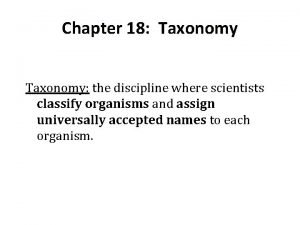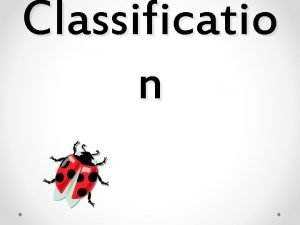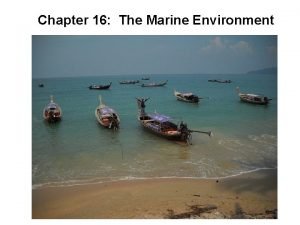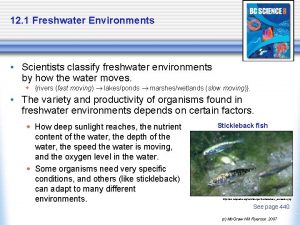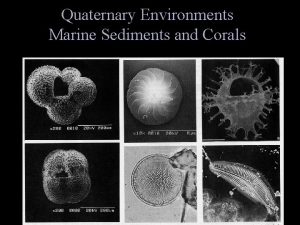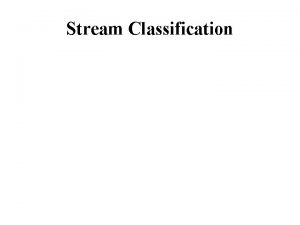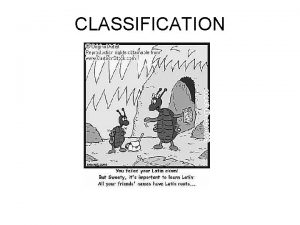Environment Classification Methods Marine scientists classify marine environments










- Slides: 10

Environment Classification Methods

§ Marine scientists classify marine environments by dividing the seas into many different regions based on physical characteristics.

Ocean Zones

The pelagic and benthic zones § The most basic division of the ocean based on location is between the water column and the bottom. § The water portion is called the pelagic zone. § The bottom is called the benthic zone.

The neritic and oceanic zones § The pelagic zone is divided into two horizontal zones – neritic and oceanic. § The neritic zone is the water area between the low tide mark to the edge of the continental shelf. § The oceanic zone is the open water area beyond that.

the epipelagic, mesopelagic, bathypelagic, abyssalpelagic, and hadalpelagic zones § The oceanic zone is further divided into vertical regions called the epipelagic zone, mesopelagic zone, bathypelagic zone, abyssalpelagic zone, and the hadalpelagic zone.

§ The _______ is the top layer that sunlight penetrates. § Below the _______ lies the _______, which sunlight reaches but not strongly enough to support life. § Below the _______ are the bathypelagic, _______, and the _______. The bathypelagic zone is the deep water in the open ocean. § The _______ is the even deeper water in oceanic trenches. § _______ is the deeper water in the ocean trenches.

the supralittoral, sublittoral, outer sublittoral, bathyal, abyssal, and hadal zones § The _______ is divided based on depth. § Moving from shore toward the open ocean, the first zone is the _______. This is the zone that water splashes, but it does not remain submerged. § Beyond that lies the _______, which is the bottom area between the high-tide and low -tide mark so that is sometimes submerged and sometimes above water.

§ Beyond the _______ is the continental shelf. This area is divided into the sublittoral zone and outer _______ § The _______ is the ocean bottom close to shore. § The outer _______ is the ocean bottom out to the edge of the continental shelf.

§ The _______ is the bottom along the continual slope down to the _______. § The deep open ocean bottom is called the _______. § The deepest zone, areas below 6, 000 meters (19, 685 feet) is called the _______.
 How do scientists classify stars
How do scientists classify stars Why do scientists classify organisms?
Why do scientists classify organisms? Why do scientists use classification
Why do scientists use classification What variables are used to classify stars
What variables are used to classify stars How do scientists classify stars
How do scientists classify stars How do scientists classify organisms
How do scientists classify organisms How do scientists classify protists
How do scientists classify protists How do ecologists usually classify marine ecosystems?
How do ecologists usually classify marine ecosystems? Chapter 16 the marine environment
Chapter 16 the marine environment Copernicus marine environment monitoring service
Copernicus marine environment monitoring service Direct wax pattern
Direct wax pattern

